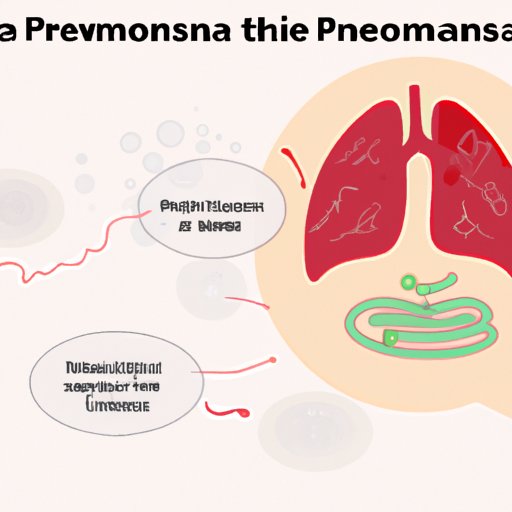
I. Introduction
Bacterial pneumonia is a respiratory illness caused by the invasion of the lungs by harmful bacteria. While the disease can affect anyone, it can be especially serious for those with weakened immune systems or underlying chronic conditions. It is therefore important to understand the most common causes, symptoms, and treatment options in order to prevent and effectively manage bacterial pneumonia.

II. Understanding the Common Causes of Bacterial Pneumonia
Bacterial pneumonia can be contracted in various ways, including exposure to specific pathogens and weakened immune systems. Individuals can become infected with bacterial pneumonia through both community-acquired and hospital-acquired infections. The most common bacterial infections that cause pneumonia include Streptococcus pneumoniae, Legionella, Haemophilus influenzae, and Mycoplasma pneumoniae.
III. Preventing Bacterial Pneumonia
Preventing bacterial pneumonia involves practicing good hygiene, staying hydrated, avoiding sick individuals, and getting vaccinated against common pneumonia-causing pathogens, such as pneumococcal and influenza viruses.
IV. The Role of Bacteria in Pneumonia Transmission
Bacterial pneumonia is caused by the invasion of harmful bacteria into the lungs. Streptococcus pneumoniae and Legionella are two bacterial pathogens that commonly cause pneumonia. These pathogens are transmitted from person to person through respiratory droplets from coughing or sneezing. Other bacterial pathogens such as Haemophilus influenzae and Mycoplasma pneumoniae can cause pneumonia through community-acquired infections.
V. Early Signs and Symptoms of Bacterial Pneumonia
Early warning signs of bacterial pneumonia include cough, fever, and shortness of breath. If these symptoms persist, it is important to seek medical attention as early diagnosis and treatment can lead to better outcomes. Other recognizable symptoms include chest pain, fatigue, and difficulty breathing.
VI. Risk Factors for Developing Bacterial Pneumonia
Common risk factors associated with bacterial pneumonia include age, chronic health conditions, smoking, and compromised immune systems. It is important to modify lifestyle behaviors and seek medical attention if any of these risk factors apply to your situation.
VII. Understanding Antibiotic Resistance in Bacterial Pneumonia Treatment
The overuse and misuse of antibiotics have led to the development of antibiotic-resistant bacteria, and this poses a growing concern in the treatment of bacterial pneumonia. It is important to choose the appropriate antibiotic based on laboratory testing and diagnosis to avoid contributing to antibiotic resistance.
VIII. Care Options and Treatments for Bacterial Pneumonia
There are different care options and treatments available for individuals who have been diagnosed with bacterial pneumonia, including medication options, self-care tips, and in-hospital treatments. Self-care tips include resting, getting plenty of fluids, and taking over-the-counter medications to help manage symptoms at home.
IX. Conclusion
Bacterial pneumonia can be a serious respiratory illness that requires prompt medical attention. Understanding the common causes, symptoms, and treatment options associated with bacterial pneumonia can help individuals prevent and manage their risks. It is important to seek medical attention if experiencing symptoms of bacterial pneumonia or seeking further information about the condition.





